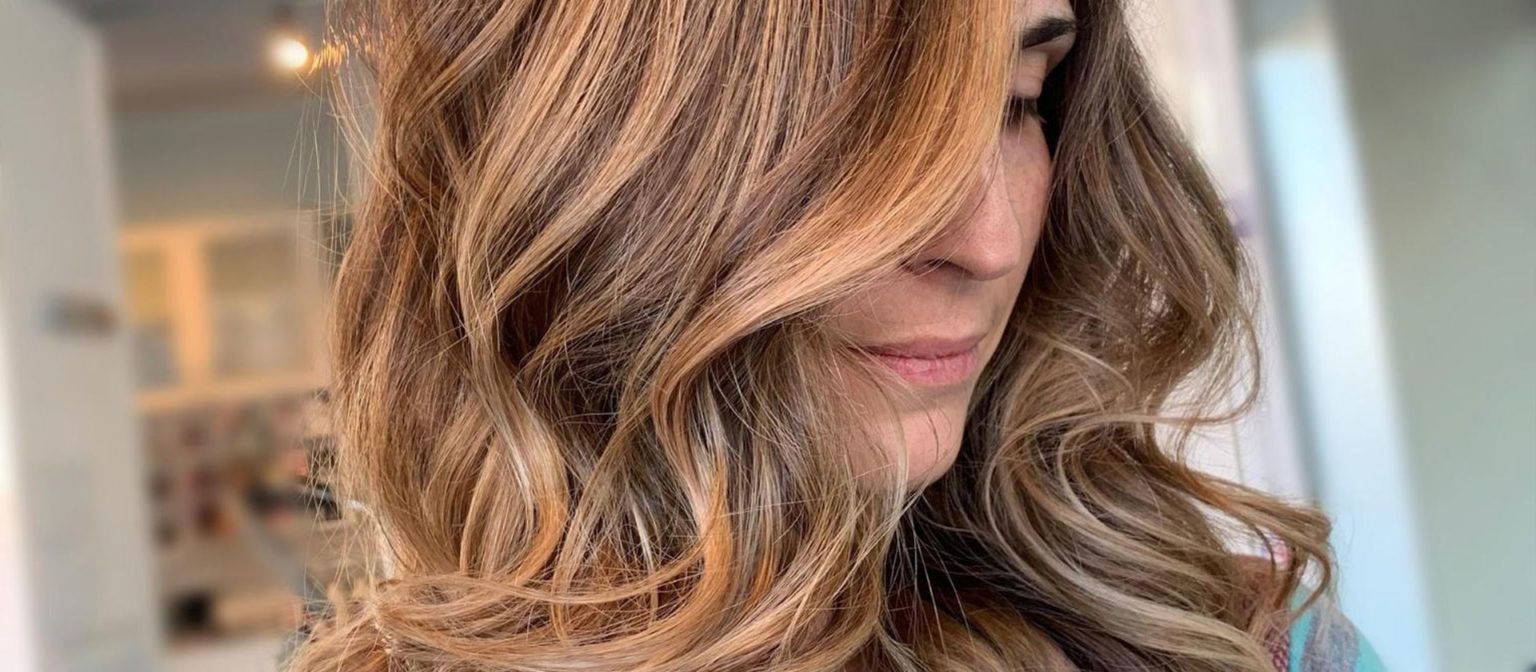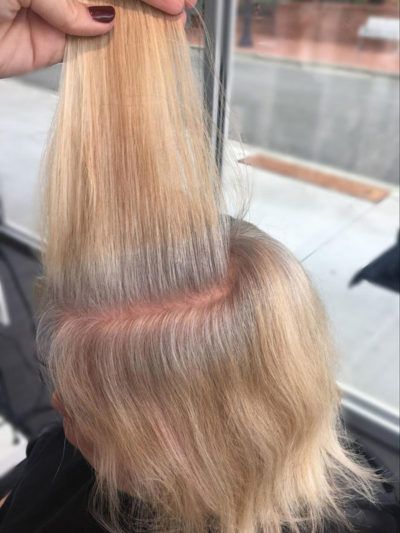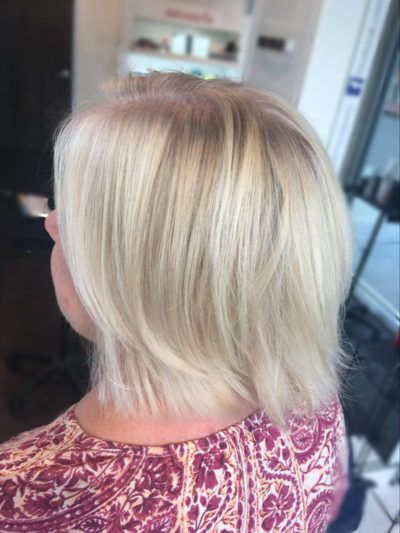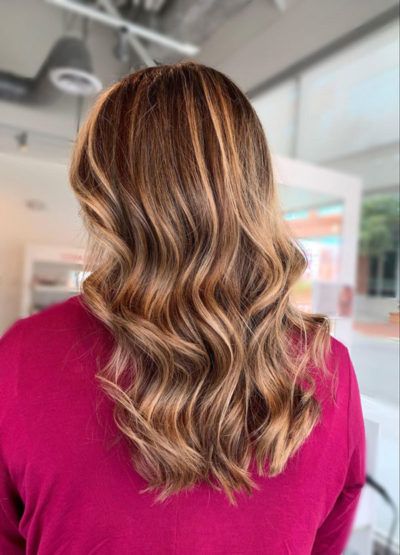You’re sitting at a stoplight, the sun beams in just right and something catches your eye in the rear view mirror. You flip down your visor in a panic and there it is. A gray hair. (And also your moustache you’ve been meaning to take care of, a new eye wrinkle and your brows that desperately need plucking.) It’s inevitable for most people and everyone’s first reaction is coming in and telling me “We gotta cover this gray!” Generally, my clients automatically say they need a root color to completely cover it all up. However, I prefer to steer people towards dimensional color to blend gray, especially when it’s still a low percentage or only concentrated in one area.

What's The Best Approach For My Gray?

Why blending over full coverage? When you do a permanent color, it covers EVERYTHING, which means when your hair starts to grow out you will have a stark line of outgrowth. Now given that your hair grows about half an inch a month, on average, that means you will need to get that covered every 4-8 weeks, depending on how much your gray bothers you. In my opinion, the gray is there. I have it too! But when there’s such a small amount and you’re not interested in seeing me every four weeks for color (no hard feelings), there’s a better option that won’t leave you with an obvious line.

Balayage and foil highlights are both great options to blend out those sparkles. Think about it this way. If you have a solid color and the gray grows in next to it, it’s going to stand out because it’s contrasted from the rest. On the other hand, if you combat gray by adding dimension, there’s lots of different colors and tones to distract away from the gray so your eye isn’t immediately drawn to it. It’s all in the trick of the eye and misdirection! Magicians, take note.

Balayage is great because by nature, it grows out super softly. Balayage is a super customizable hand painted highlight that is surface painted near the root and gets brighter at the ends. When it grows out, instead of getting a hard horizontal line, it diffuses out vertically to give you more time in between appointments. For my brunettes that want a darker root, we can always do a root melt with demi-permanent color. This will give you semi-translucent coverage of any gray that will just fade away over time instead of leaving that line. So basically, if we are ever faced with another quarantine situation, you’ll have low maintenance color that can handle the extra time in between.
Foil highlights are also an option if you want to be a cooler, bright blonde! They will give you a consistent blonde from root to tip and will get you brighter in less sessions. However, foil highlights can grow in with a line just like permanent color. To combat this, we can use a demi-permanent color again to do a “root shadow” which is fancy jargon for tapping a color at your root to blur out the foil line.
Even if you already have permanent color, balayage or foil highlights are a great way to soften your grow out in between appointments. It can also be used to transition you away from all over color and back to just blending or going natural! My mom used to do an all over blonde but she was terrible at getting it done on schedule and her natural white/silver is super pretty so I did a heavy balayage on her and now she doesn’t even need to color her hair anymore (and she’s always getting compliments on it!)
Whichever way you want to deal with it, whether it be permanent color, dimensional blending or doing nothing at all; there is no wrong way to color your gray. But I am always here for you to make recommendations of what makes the most sense for your hair and I’m a big fan of options.
